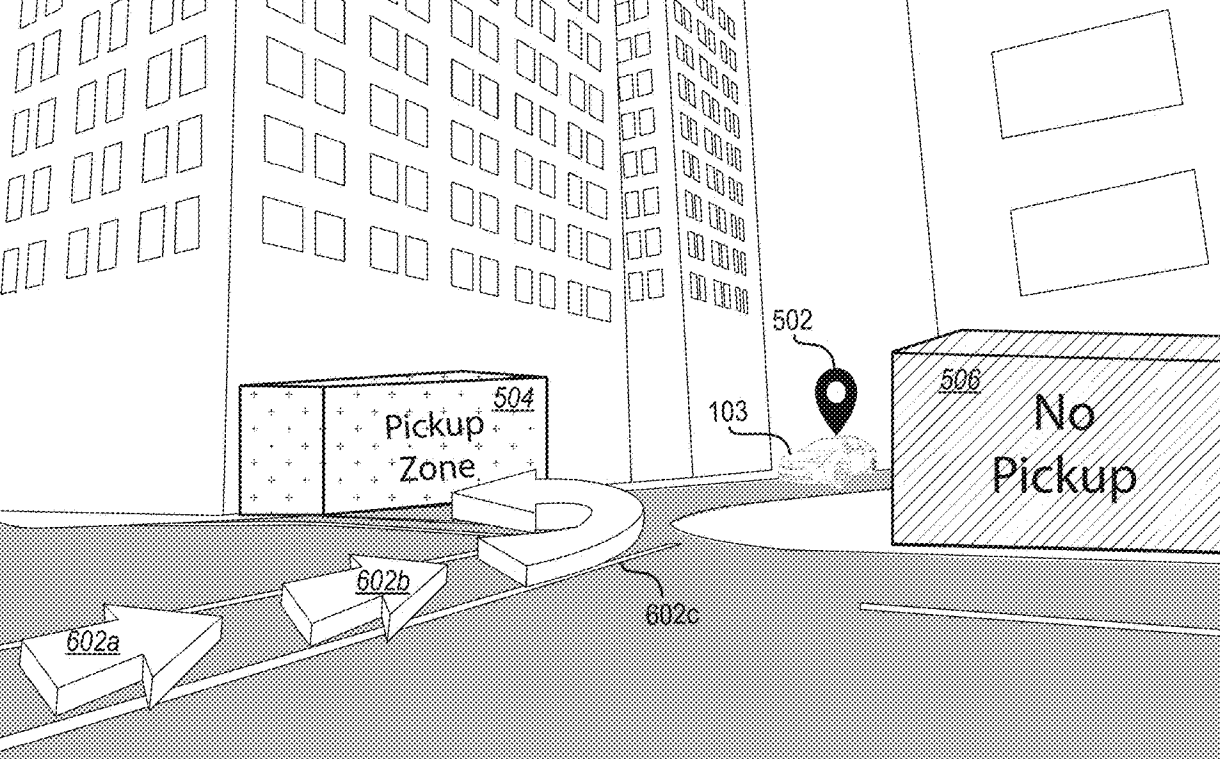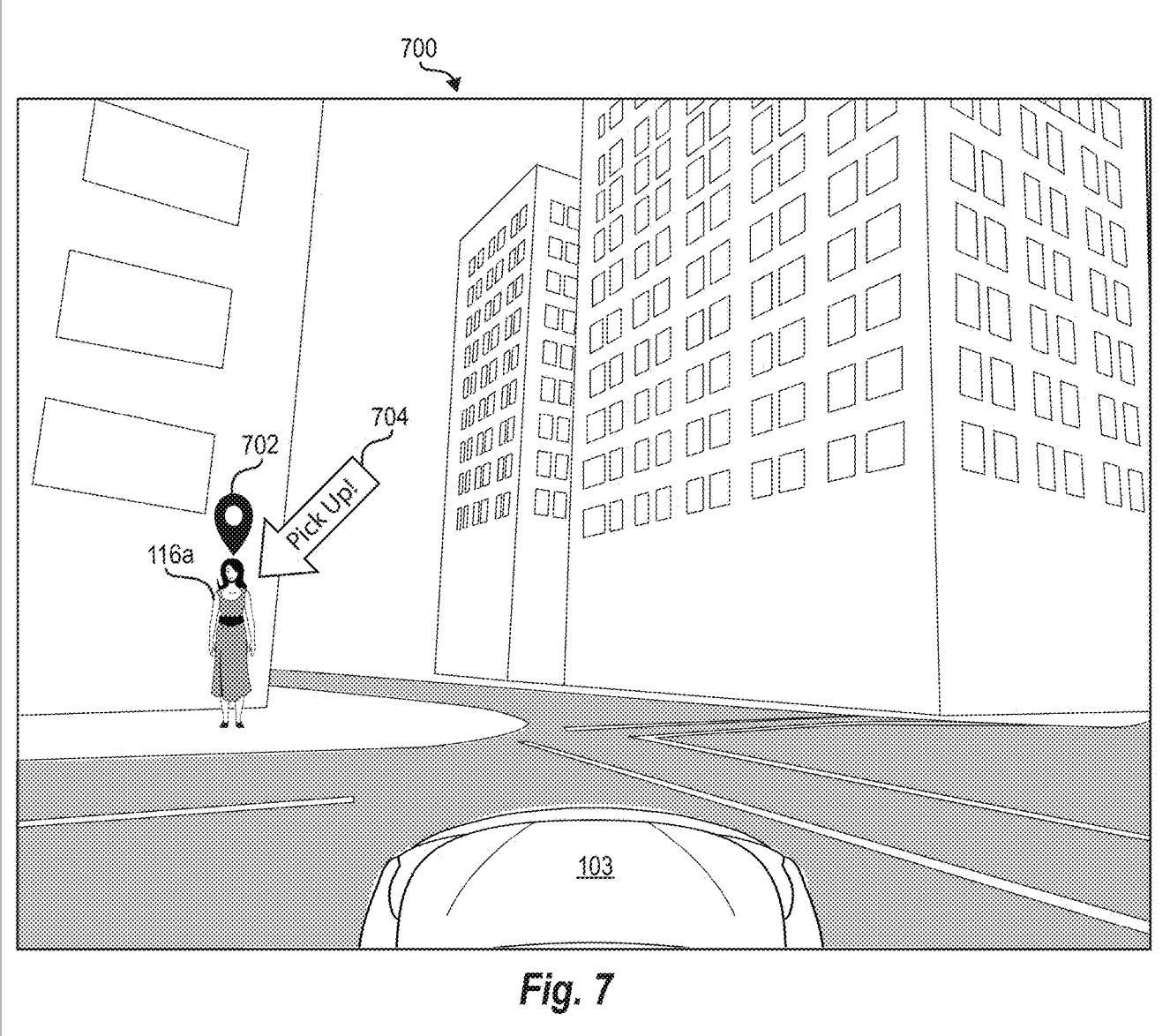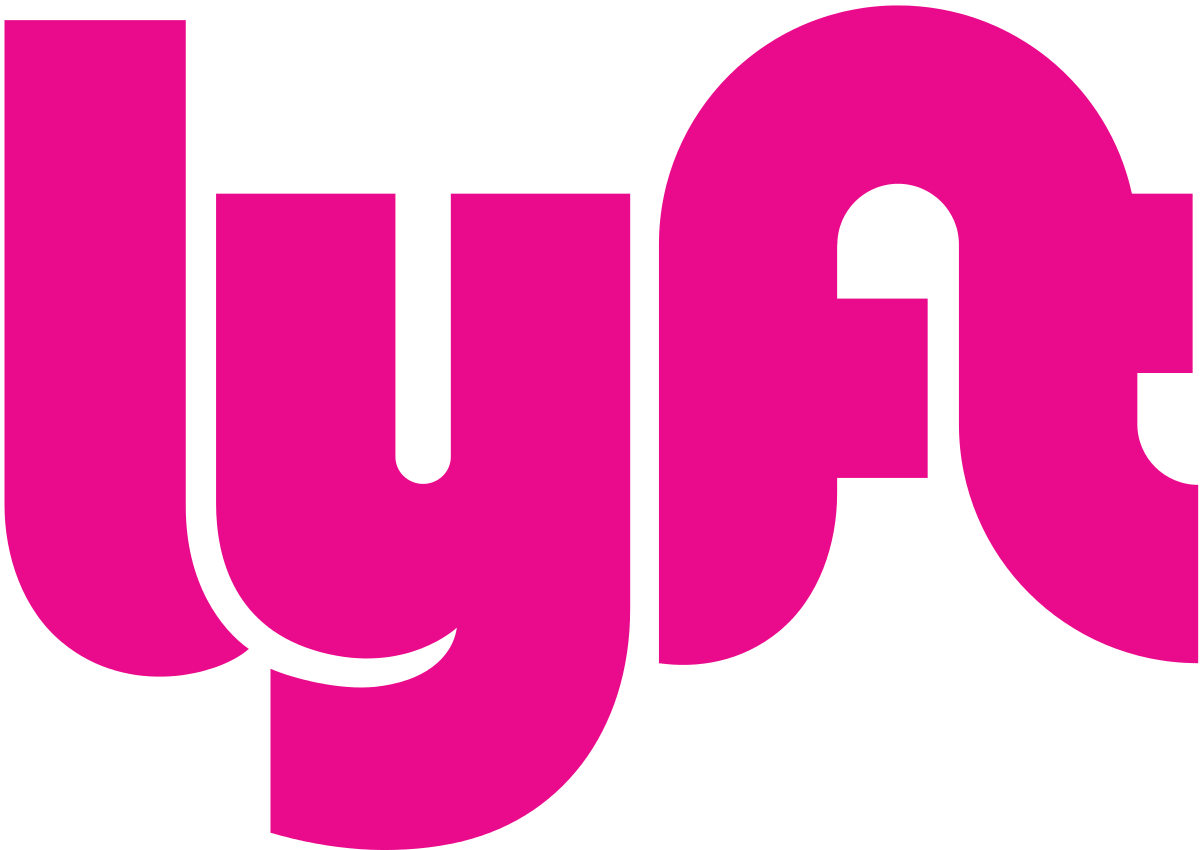Lyft files patents for two ideas that use both AR & VR to create a better overall value of services.
Calling a Lyft driver is a pretty simple task. You open up the app, make a couple taps, and a driver is on the way to pick you up. Behind the scenes, however, there are six years of accumulated data-rich information that, from Lyft’s perspective, could used to transform the current rideshare experience. Two patents in particular indicate Lyft’s exploration of AR and VR technology as part of their potential business model.
One patent titled ‘Providing Information To Users of A Transportation System Using AR Elements’, focuses on helping Lyft drivers locate their next client through digital information such as arrows for turn-by-turn navigation, along with 3D images that depict zones called “drop-off/pick-up location” or “no drop-off/pick-up”, which are determined through customer feedback that Lyft has collected since they first started offering rides.

Image Credit: The U.S. Patent and Trademark Office
If you’ve ever used a service like Lyft or Uber, odds are at one point you’ve received a call from your driver who is unable to find you due to a congested pickup point, such as an airport or concert venue. AR could assist by giving drivers the ability to pick you out of a crowd. You could also use your own smartphone or any type of wearable AR device to find them yourself.
Lyft drivers would access this information through an AR headset, such as a Microsoft HoloLens, Google Glass, or Magic Leap, which would place the digital content directly in the view of the Lyft driver, or through an AR enabled smartphone.

Image Credit: The U.S. Patent and Trademark Office
The second patent, titled ‘Providing A VR Transportation Experience’, focuses on entertainment by immersing passengers in VR experiences that react to the movement of the vehicle; turning, stopping, bumps in the road, or speeding up would translate to motions in the game world, delivering a deeper sense of immersion as passengers actually feel their virtual spaceship accelerate or digital race car make a hard stop.
The concept behind Lyft’s VR sounds very similar to Audi’s own backseat VR entertainment system, Holoride, which debuted last month during CES 2019 in Las Vegas. Audi’s platform also revolves around utilizing real-world motions from the vehicle in-game.
According to the patent part riders would be able to share their VR experiences with friends and family via social media. This will most likely be made possible through Lyft’s recent $72 Million dollar purchase of Blue Vision Labs, an AR startup that gives people the ability to collaborate through a shared AR experience.
Tech companies are zeroing in on what is known as the “passenger economy”, and it’s shaping up to be quite a big business. If you’re a parent or have any close siblings, then you know just how important travel entertainment can be for everyone’s sanity – and this year, during CES 2019, VR and AR seemed to be the common solution among tech giants.
Besides Audi’s Holoride, attendees were able to experience multiple immersive backseat entertainment projects, including self-driving cars featuring 270-degree VR films to keep passengers entertained. If you were lucky enough to attend this years CES, then you probably saw Warner Bros backseat Batman experience which takes you on a virtual ride through Gotham City using large screens, projectors, and haptic feedback.
AR and VR isn’t limited to passenger entertainment or helping drivers navigate through busy cities, however. It’s actually been a big part of the automotive industry for some time now, with companies like Volkswagen incorporating VR into their employee training, Nissan using AR Star Wars characters to better demonstrate safety technology, and most recently, the Ford Motor Company using VR to put driver’s head to head with their new Co-Pilot360 technology.
As both ridesharing services and autonomous vehicle technology continues to rise, in-car entertainment and AR navigation have become viable businesses, and both Lyft and Uber are pulling out the big guns to attract your business, whether you’re a driver or a passenger.
The two companies have recently introduced loyalty programs to incentivize the rideshare experience, and in the past couple of years have branched out into the food delivery business; such as Uber Eats, where your Uber driver will stop at your favorite local burger spot or fast food joint, pick up your food order and then deliver it to you.
Though it’s not food delivery, Lyft recently partnered with REWIND to explore the possibilities of back-of-car experiences that include XR and gaming.

Image Credit: Lyft
However, Business 101 will tell you right away that the real key to customer loyalty is a combination of reliable help services, an easy customer experience, and overall value. Lyft’s patents tell us that they believe AR and VR could be the two tools that can deliver on all those points.
Lyft is a San Francisco, CA based company offering ridesharing services in the United States and Canada.
The post Lyft Patents Show How AR & VR Could Change Ridesharing appeared first on VRScout.
from VRScout http://bit.ly/2CCcAyN
via IFTTT
No comments:
Post a Comment